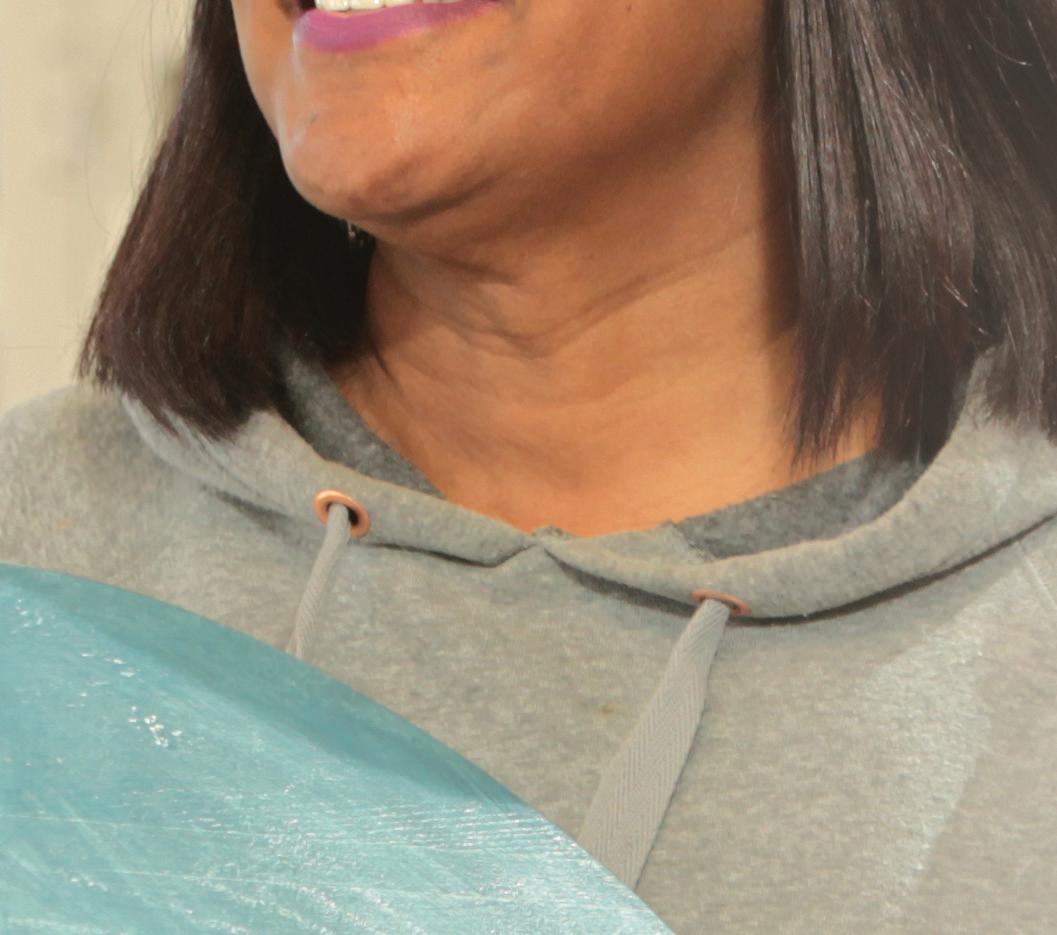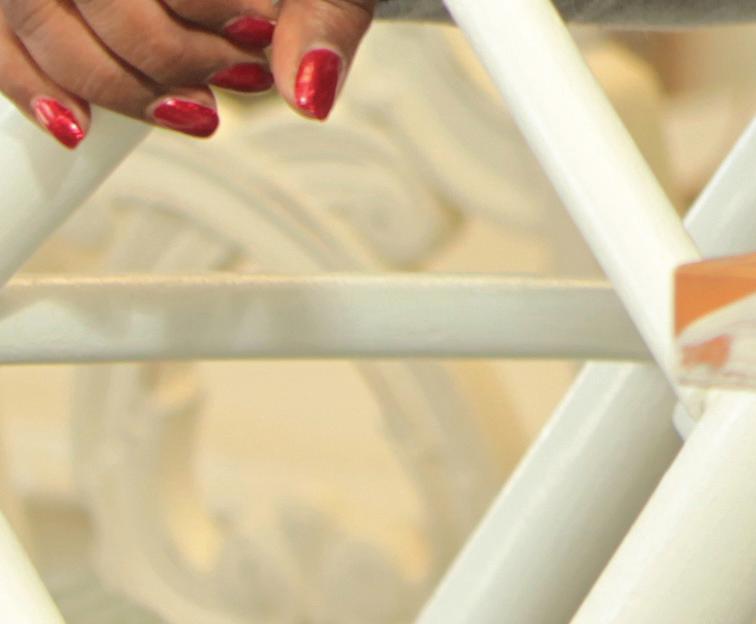
5 minute read
GOODBYE, BACK PAIN









A CUTTING-EDGE SURGERY ENABLED ONE PATIENT TO RETURN TO HER ACTIVE LIFESTYLE QUICKLY. TO RETURN TO HER ACTIVE LIFESTYLE QUICKLY.





Johanna Robinson is back to hand-painting furniture after robotic spine surgery.
For more than a year, the pain in Johanna Robinson’s back was so debilitating that she strugg led to get out of a chair. “If I sat for a while, it was hard to get up,” says Johanna, 63, of Belmar. “I had a lot of pain and stiff ness, and I could barely walk.”
In July 2019, Johanna was diagnosed with degenerative disc disease, in which the spinal discs—which act as shock absorbers between the spinal bones—break down, and spinal stenosis, in which the spinal canal narrows, putting pressure on nerves. Her symptoms, which included back pain that sometimes radiated to her left leg, improved aft er receiving corticosteroid injections, but the treatment didn’t bring lasting relief.
Johanna consulted spine surgeons Marc Menkowitz, MD, and Steve Paragioudakis, MD, at Monmouth Medical Center (MMC). Th ey recommended surgery using the hospital’s new robotic system for spine procedures. MMC is only the second hospital in New Jersey to use the Globus Medical ExcelsiusGPS robot for minimally invasive spine surgery. Th e robot can be used to treat damaged discs, scoliosis and other back problems.
The ExcelsiusGPS system combines a robotic arm with computer-assisted navigation. CT scan and X-ray images of the spine are taken prior to a procedure. These images are used to create a surgical plan, which helps the physician guide the robotic arm to a specific area of the spine.
The surgeon is able to view the procedure on a monitor, which provides real-time feedback. With this technology, the procedure is more accurate and less invasive than traditional surgery, according to Dr. Menkowitz. “We can be precise to the millimeter,” he says. “Once we navigate to where we want to be in the spine, the system locks us into the surgical pathway.”
Patients benefi t from this high-tech surgical system in several ways. Since the procedure is so precise and involves small incisions, there’s less blood loss, tissue damage and scar tissue. Patients recover more quickly and with less pain than with traditional spine surgery, says Dr. Menkowitz. As a result, hospital stays tend to decrease by about a day, on average.




From left: Spine surgeons Marc Menkowitz, MD, and Steve Paragioudakis, MD, perform minimally invasive procedures using a new robotic system, which helps patients recover more quickly and with less pain. Note: This photo was taken before mask and social distancing recommendations were in place.




Another advantage: Th e patient is exposed to less radiation during the surgery because fewer X-rays need to be taken to guide the procedure, says Dr. Menkowitz.
Since MMC introduced the ExcelsiusGPS in October 2019, the system has been used in more than 20 spine surgeries performed by Drs. Menkowitz and Paragioudakis. They are seeing positive results. “This is the wave of the future,” says Dr. Menkowitz. “I think all spine surgeries will be done this way eventually.”
A FAST RECOVERY
Last October, Johanna had a three-hour surgery that involved two procedures. One was a lumbar laminectomy, which involved removing spinal bone that was putting pressure on spinal nerves. Th e other was a spinal fusion to stabilize her back. “Th e surgery went very well,” says Dr. Menkowitz. “Johanna’s recovery has been signifi cantly quicker compared to patients who had the standard procedure. A week aft er the surgery, she wasn’t taking any pain medication, and she was walking without any assistive devices.”

Johanna spent three nights in the hospital (she has a heart condition, which lengthened her stay by about a day) and was thrilled that she was able to get up and move around the day aft er surgery. She took narcotic medication in the hospital for a few days to ease the postoperative pain, but when she got home she only needed to take over-the-counter acetaminophen for a few days.
After the operation, Johanna wore a back brace for support and participated in physical therapy for two months to strengthen her abdominal muscles and improve her cardiovascular fitness. She’s relieved that she’s able to walk on the treadmill without shooting pain in her left leg. “I’m a lot better now,” she says. “I have no trouble walking and climbing the stairs, and I can get up much better after sitting. No one would know that I had surgery.”
In fact, Johanna was feeling so well that she took an eight-day Caribbean cruise in January. “I’m so glad I had the robotic surgery because my recovery was much faster than it would have been otherwise,” she says.
To learn more about robotic surgery at Monmouth Medical Center, call 888.724.7123.










